Table of contents
Wakame ( Undaria pinnatifida) is a brown seaweed that is often served in miso soups in Japan. Wakame also tastes good raw (and preferably in organic quality) in a salad.
Use in the kitchen
The brown seaweed Wakame tastes spicy, slightly sweet and pleasantly of the sea and has a crunchy consistency. Almost the entire plant is edible - including parts of the particularly nutrient-rich root, which is known as Mekabu Wakame. Wakame can be used fresh or dried; in Europe, Wakame is usually only available dried or made into a marinated salad.
To use dried wakame, you should first rinse it with cold water, soak it in lukewarm water for about 10-15 minutes and squeeze it well. It should be noted that dried seaweed increases in volume during the soaking time. The amount of soaked seaweed corresponds to about five to ten times the amount of dried seaweed. Wakame can be prepared raw, but can also be cooked. When cooked, the color of raw brown seaweed changes from brown to green. 1
Traditionally, wakame is used for Japanese miso soups (e.g. Japanese miso soup with zucchini and carrots). The wakame salad "Goma Wakame" is a popular side dish in American and European sushi restaurants. Literally translated, Goma Wakame means "sesame seaweed" because the recipe usually contains sesame seeds. 1
Soaked, raw wakame also tastes wonderful in other salads, e.g. with cucumber, lettuce (likelettuce) or tofu. It can also be used to spice up onigiri ( rice balls). Cooked, wakame gives vegan rice and vegetable dishes a spicy aroma. Soy sauce and rice vinegar go well with Asian dishes with the macro algae.
The algae's use is not limited to Asian recipes, however; you can also add wakame to potatoes, pasta with mushrooms or pumpkin vegetables. It also gives vegan burger patties made from chickpeas or omelettes (e.g. with shiitake mushrooms) that certain something.
When crushed, dried wakame seaweed makes a mineral-rich seasoning for soups, sauces and stews.
Whether dried wakame is considered raw depends on the drying process and processing used. Dried wakame products are considered raw if the maximum temperature during drying does not exceed 42 °C.
Vegan recipe for apple wakame salad
Ingredients (for 4 people): 8 g wakame (dried; preferably raw and organic), 1 apple, ½ radicchio, 2 sticks of celery, 2 tbsp raisins, 1 piece of ginger (approx. 2 cm), 4 tbsp rapeseed oil, 3 tbsp miso paste, 2 tbsp apple cider vinegar, 2 tbsp water, some salt andpepper.
Preparation: Rinse the wakame in cold water and soak in lukewarm water for about 15 minutes. Rinse the apple, quarter it, remove the core and cut into thin slices. Wash the radicchio, spin it dry and tear or cut it into bite-sized pieces. Rinse the celery and cut it into half rings. Peel the ginger, grate it finely and mix it with rapeseed oil, miso paste, apple cider vinegar and water to make a dressing. Rinse the soaked wakame in cold water, squeeze it out and add to the apple, radicchio and celery. Add the raisins and dressing and mix everything together well. Season the vegan apple wakame salad with salt and pepper if necessary and serve immediately.
Vegan recipes with wakame (raw) can be found under the note: " Recipes that have the most of this ingredient ".
| Not only vegans or vegetarians should read this: Vegans often eat unhealthily. Avoidable nutritional mistakes. |
Purchasing - Storage
Wakame is rarely available fresh and pure in Europe. Some supermarkets such as Coop, Migros, Spar, Lidl, Rewe, Edeka and Billa have marinated wakame salad (Goma Wakame) in their range. Migros occasionally offers dried wakame. Supermarkets such as Denner, Volg, Aldi, Hofer or organic supermarkets ( Denn's Biomarkt, Alnatura) do not (yet) have the algae in their standard range. You have more success in Asian grocery stores or online shops. There you can buy dried wakame cut into strips, as flakes or as an instant product to stir in (without soaking). Organic quality is well represented in online stores. Dried algae in raw food quality (gentle drying below 42 °C) is also available.
The availability of Wakame (raw) varies depending on the size of the store, catchment area, etc. Our recorded food prices for the DA-CH countries can be found above under the ingredient image - and by clicking on them you can see their development at various suppliers.
Storage tips
Dried wakame will last for several months if stored in a dry, cool place protected from light.
Ingredients - Nutritional values - Calories
What are the ingredients in wakame? The energy content of wakame (raw) is 45 kcal and is therefore low. With 0.64 g/100g of fat, the seaweed is also low in fat. Does wakame contain protein? It contains 9.1 g/100g of carbohydrates and 3 g/100g of proteins. The salt content is high at 2215 mg/100g (92.3% of the daily requirement). Nori leaves (3439 mg/100g) and dried kombu seaweed (7112 m/100g) contain even more salt. 2 The following are three important wakame nutrients that occur in significant quantities.
Fresh wakame contains a lot of iodine (iodine) at 4200 µg/100g. Algae generally contain a lot of iodine, for example raw arame algae contains 8750 µg/100g, raw laminaria algae 38,000 µg/100g and dried kombu algae 295,400 µg/100g. 2 However, the iodine content of wakame (as well as that of other algae) can vary considerably depending on the region where it is grown, how it is stored and how it is processed. Read more about iodine in the chapter "Danger - Intolerances - Side Effects" or directly in the link to iodine above.
Raw wakame is rich in folate (ex vitamin B9, B11). The content of 196 µg/100g (98% of the daily requirement) is similar to that of cartilage kelp (182 µg/100g), bladderwrack (180 µg/100g) and arame (180 µg/100g). Dried dulse (ragweed) has more than six times the vitamin at 1269 µg/100g. 2
Manganese is also present in considerable quantities at 1.4 mg/100g (70% of the daily requirement). Nori leaves (1.2 mg/100g) contain a similar amount. Pine nuts contain even more manganese (8.8 mg/100g). 2
Does Wakame contain Omega-3? According to the USDA, the Wakame Omega-3 content is 0.002 g/100g. 2
The complete ingredients of Wakame (raw), the coverage of the daily requirement and comparison values with other ingredients can be found in our nutrient tables. In the article Nutrients explained you will get a detailed insight into the topic.
Health effects
Is wakame healthy? Wakame ( Undaria pinnatifida) is rich in natural bioactive compounds such as polyphenols, pigments (phycobilins, carotenoids) and phytosterols. Due to these components, the algae has various properties such as antimicrobial, antioxidant, anti-inflammatory and anti-cancer. Anticoagulant and antidiabetic effects have also been reported. Another effect of Undaria pinnatifida is its blood pressure lowering activity. 3,4
Numerous studies have shown that the polysaccharides of wakame play an important role in its nutritional and medicinal value. They exhibit a variety of biological activities, including immunomodulatory and antithrombotic properties, in addition to those mentioned above. 5
The sulfonated polysaccharide fucoidan, which is found in brown algae, is one of these bioactive polysaccharides. It has antioxidant, anti-cancer and anticoagulant effects. 1
Dangers - Intolerances - Side effects
The brown algae Wakame and algae in general are a source of the essential trace element iodine. This plays an important role in thyroid function, as it is required for the synthesis of thyroid hormones. However, long-term, high intake of iodine is problematic and can lead to thyroid dysfunctions such as hyperthyroidism or hypothyroidism.
The recommended iodine intake is 150 μg/day for adults. The Scientific Committee on Food ( SCF) has set a maximum tolerable amount of 600 μg/day. The amount of brown algae biomass that corresponds to a certain amount of iodine varies considerably. Processing (e.g. drying) can considerably reduce the iodine content of brown algae, but it is still high afterwards. The stated maximum daily amount of iodine for adults (600 μg) can be achieved by consuming 0.2 to 11 g of processed, dry brown algae. 6 Therefore, only consume brown algae, including wakame, in small quantities and when buying algae products make sure that the iodine content and a maximum recommended daily intake are stated. This will enable you to estimate how high your iodine intake is and avoid too high an intake. People with a thyroid dysfunction should avoid consuming wakame.
For adults in iodine-poor areas (e.g. large parts of Europe) who do not consume iodized salt or other iodine-rich foods or medications, we recommend 1 g of dried wakame per day on average. The body stores 10-20 mg of iodine.
Seaweed products may contain traces of crustaceans, so caution should be exercised by people with a crustacean allergy.
Folk medicine - naturopathy
In traditional medicine in Asia, Wakame has been used for more than 2000 years as an active ingredient for edema, mucus excretion and diuresis as well as for detoxification. 5
Ecological footprint - animal welfare
First of all: The CO2 footprint of a food depends on various factors. The type of agricultural production (conventional vs. organic), seasonal, regional, domestic production or import by truck, ship or plane, different types of packaging and whether the goods are fresh or frozen all play a decisive role. Organic seafood products are to be preferred, as is the case with land-based products.
Although we did not find any specific values for the ecological footprint of wakame, we did find values for other types of seaweed: dried sugar kelp ( S. latissima) has an emission of 6.12 kg CO 2 eq/kg and fresh, wet seaweed has an emission of 0.16 kg CO 2 eq/kg. 16 A type of red algae ( Gracilaria lemaneiformis) used to make agar even had a negative carbon footprint (-7.21 kg CO 2 eq/kg), meaning that the seaweed was able to store more CO 2 than it released during production. 17 On average, seaweed is a very climate-friendly food.
Seaweed farms appear to be more sustainable than agriculture on land. The cultivation of seaweed does not require fresh water (keyword: water footprint), chemical fertilizers, or soil - which are major negative factors of farming on land. 13 In contrast to seaweed (macroalgae), microalgae (e.g. Chlorella vulgaris) are often grown on land in artificial ponds, which requires more input. 14,15
Algae remove CO 2 from the atmosphere, which is good for the climate. According to researchers at the Max Planck Institute for Marine Microbiology in Bremen, brown algae absorb large amounts of carbon dioxide from the air and release some of the carbon it contains back into the environment in the form of mucus. Since the algae mucus, called fucoidan, is difficult for other marine creatures to break down, the carbon remains bound in it and does not return to the atmosphere for a long time. Researchers estimate that brown algae could thus absorb up to 550 million tons of carbon dioxide from the air every year. 7
Brown algae also influence the atmosphere and climate by emitting large amounts of iodine as they store large amounts of iodine, especially algae of the genus Laminaria. Iodine emissions have been shown to have an impact on aerosol formation, the formation of coastal clouds and climate warming. Increasing global iodine emissions could trigger an acceleration in the melting of Arctic sea ice. 18,19
Animal welfare - Species conservation
Wakame is often described as one of the world's worst invasive species. Although wakame prefers cold water (5-20 °C), it shows a high tolerance to sunlight and temperature. It is able to tolerate high waves, salinity and other harsh environmental conditions. It can produce a dramatic appearance at high population densities in highly invasive sites due to its large and conspicuous sporophyte stage. However, the situation in Australia shows that while wakame can invade a wide range of coastal areas very successfully, there is little evidence of direct harmful effects. 3,8,9
Worldwide occurrence - cultivation
The brown algae species wakame ( Undaria pinnatifida) is native to the cold temperate seas of China, Japan and Korea. It has been introduced (intentionally and inadvertently) to many other places, including the European Atlantic, the French Mediterranean, Australia and New Zealand. It is considered an invasive species with a high tolerance to light, temperature and salinity (see chapter "Ecological footprint - animal welfare"). Wakame is cultivated on a large scale in China, Japan and Korea. 1,3,8 In France, successful cultivation experiments were carried out on the Atlantic coast in the 1980s, at several locations in Brittany. 10
Found in the wild
As mentioned, wakame is found naturally in the cold temperate seas of China, Japan and Korea and is introduced worldwide.
In its Northeast Asian homeland, wakame is a winter annual that inhabits rocky substrates from the low intertidal zone to 18 m depth and is widespread at depths of 1 to 3 m. The algae can grow up to 1-1.7 cm per day, reach a length of 1.3 to 2 m and have a maximum lifespan of about 6 to 8 months. 8 The thallus (vegetative body) of wakame is fixed with a fibrous support apparatus that acts as a root, while the midrib is connected at the end to rolled-up wing-like leaves. Sporophylls (spore leaves) are only present in mature plants. 3
Cultivation - Harvest
Parent plants used for annual spore production are kept on lines at sea after the commercial harvest in late April, usually until late June, when the seeding process (hatchery) begins. At the end of June, when the seawater temperature rises to 18-19 °C, the well-matured sporophylls are cut from the sporophytes, brought ashore and dried at ambient temperature for 1 to 2 hours in a shady place. The sporophylls are then placed in filtered seawater at ambient temperature (16-18 °C) to release spores. When the spore concentration in the water reaches 100,000-150,000 per milliliter, the collectors (2 mm thick nylon cords wound around a plastic frame made of PVC pipes) are inserted. Once the strings are seeded with enough spores, the collectors are removed from the seeding tank and transferred to tanks of filtered seawater for the next step in the breeding process. In the northern hemisphere, breeding begins in June with the seeding of the spores on the collectors and ends in late September when the seawater temperature drops to 22 °C, which is optimal for rapid growth of the 200 µm long sporophytes. The collectors are then taken to the open sea where they continue to grow at a certain water depth. 11
The actual cultivation of wakame in the sea begins by laying longlines horizontally and attaching spore threads at intervals of 35 to 40 cm. These threads hang in the water, usually within 1 m of the surface. The first spores are about 1 cm long. Between planting in October and harvesting in April, they reach a length of 2 to 3 m. Each individual longline can produce about 80-130 kg of fresh wakame biomass. The final production weight depends on the location, water current (strong current is preferred) and water depth. 11
Harvesting begins in February, when the seaweed is about 1.5-2 m, and ends at the end of April. Seaweed is harvested by hand by cutting it from the main growing rope. Sporophylls (spore leaves) and thalli (vegetative bodies) are packed separately and transported to the processing plant. 11
Sporophylls are immediately frozen, while the remaining parts are bathed in hot water (85-95 °C) for about 20-60 seconds. The plant parts are then salted thoroughly and pressed overnight with heavy objects to remove the excess salt water. The midribs and leaves are then separated by hand, packed in boxes and stored at a temperature of -5 to -15 °C. 11
Blanching the wakame seaweed changes its color from brown to green. The color change is due to a change in the enzymes associated with the chlorophyll and occurs above 65 °C. However, if brown seaweed is heated for too long at too high a temperature, the chlorophyll breaks down into pheophytin and the color changes back to brown. An incorrect cooking process can also cause wakame to return to a brown color during storage. 12
During the drying process, algae are washed, chopped, desalted and dried. Large quantities of wakame are often dried in roller dryers. 12 There is also wakame algae dried in the sun. 11 Gentle drying at temperatures below 42 °C produces products of raw food quality.
Further information
The macro brown alga Wakame ( Undaria pinnatifida) belongs to the family Alariaceae within the order Laminariales.
Also read our articles on other brown seaweeds such as arame, bladderwrack, kombu seaweed (dried) and laminaria seaweed ( Laminari a spp.) and on red seaweeds (kelp) such as cartilaginous wrack, dulse (dry wrack) and nori sheets.
Alternative names
What do you call Wakame in German? The Japanese name Wakame is also used in German and English. In English, Wakame is also called sea mustard or Japanese kelp.

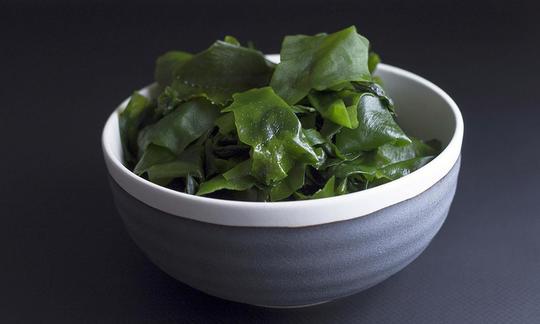

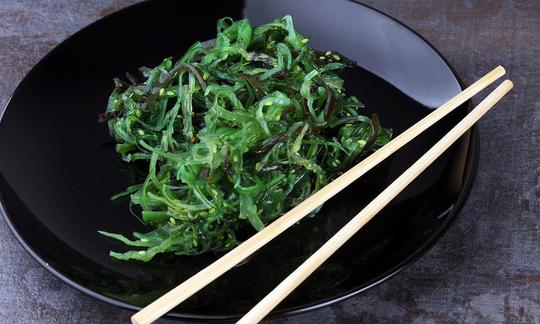

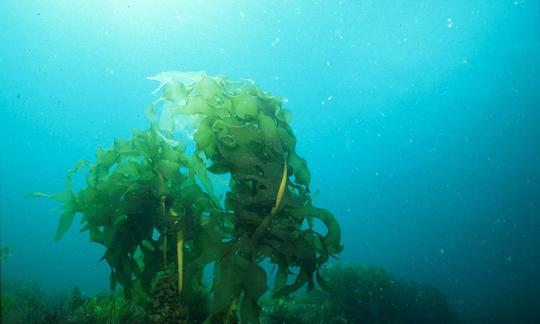

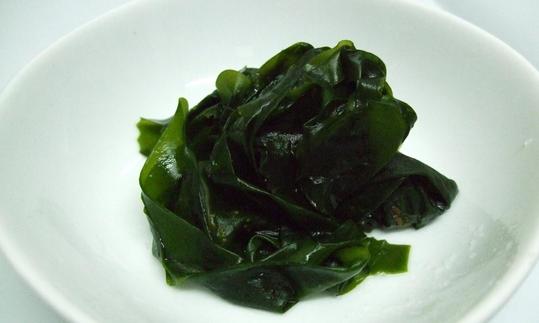

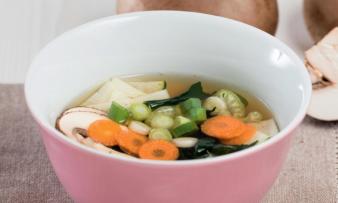
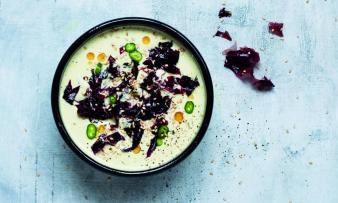
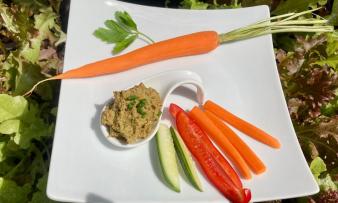
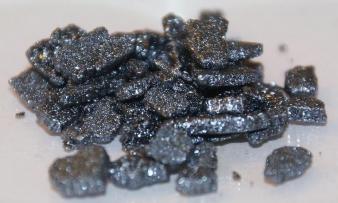




Comments